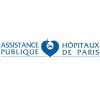
OptiGon - Optimising Laboratory Assays for Immune Responses to Gonococcus
GonorrheaThis is an observational study. Blood from otherwise healthy patients presenting with confirmed N.gonorrhoea infection, prior to treatment, will be collected to (i) allow the optimisation of assays assessing the immune response to gonococcus and (ii) assess whether N. gonorrhea specific responses can be detected on ELIspot +/- flow cytometry. The investigators plan to recruit up to 30 adults (men and women, aged 18-50 years) who have been diagnosed with confirmed N.gonorrhoea infection at the Sexual Health Clinic at the Oxford University Hospitals NHS Foundation Trust. The investigators will collect blood samples from consenting participants prior to them receiving curative antibiotic treatment.

Clearance of Asymptomatic Pharyngeal Carriage of Neisseria Gonorrhoeae With or Without Ceftriaxone...
Neisseria Gonorrhoeae InfectionAsymptomatic Pharyngeal CarriageSince the use of antibiotics, Neisseria Gonorrhoeae (NG) has acquired progressive resistance to penicillins, sulfonamides, tetracyclines and quinolones. The oropharynx is recognized as an important site for DNA exchange between NG and other commensal Neisseria, allowing NG to acquire new antimicrobial resistance. Despite the worrying data on the emergence of resistant NG, the recommendations remain to systematically treat these infections with ceftriaxone, including asymptomatic pharyngeal localizations. The objective of our study is to evaluate a ceftriaxone sparing strategy in order to limit the emergence of antibiotic resistance. The primary objective of the study is to evaluate the clearance of Neisseria gonorrhoeae, 3 months after the diagnosis of asymptomatic pharyngeal carriage documented on nucleic acid amplification test (NAAT).

Pay-it-forward Gonorrhea and Chlamydia Testing Among Men in China
GonorrheaPIONEER is a three-arm, programmatic cluster randomized controlled trial (RCT) to compare effectiveness of three implementation strategies, followed by a mixed-methods implementation evaluation study

Zenyth: Motivational Interviewing-based Telehealth Intervention for Bacterial Sexually Transmitted...
Sexually Transmitted DiseasesGonorrhea3 moreIn the United States (US), gay and bisexual men living with human immunodeficiency virus (HIV) bear a heavy burden of bacterial sexually transmitted infections (STIs) such as gonorrhea, chlamydia, and syphilis. It is important to diagnose and treat STIs in a timely manner to prevent health complications and reduce transmissions. The purpose of this study is to understand whether gay and bisexual men living with HIV are willing to collect and return specimens for bacterial STI testing when combined with live audio/video (AV) conferencing support.

Gent for Pharyngeal Gonorrhea (GC)
Pharyngeal Gonococcal InfectionThe Centers for Disease Control and Prevention has identified antimicrobial-resistant (AMR) Neisseria gonorrhoeae (NG) as one of the nation's top three urgent AMR threats. Since the advent of antibiotics in the 1930s, NG has developed resistance to every first-line antibiotic. Parenteral third-generation cephalosporins are now the only class of drug with consistent efficacy against NG. New therapies are urgently needed. Although some novel antimicrobials are under development, reevaluating older drugs is another option for quickly identifying additional treatments for gonorrhea. We propose a demonstration study to test a single dose of gentamicin for the treatment of pharyngeal gonorrhea. We chose to focus on pharyngeal gonorrhea because these infections are common, play an important role in fostering gonococcal resistance, and are harder to eradicate than genital infections. Although gentamicin is 91% efficacious for genital NG, its efficacy at the pharynx may be less since streptomycin, another aminoglycoside previously used to treat gonorrhea, was not effective for pharyngeal NG. It is unknown if streptomycin's poor efficacy is indicative of limitations of aminoglycosides as a class. We plan to enroll 60 men who have sex with men in a demonstration study to be conducted at the Seattle & King County STD Clinic to test the efficacy of 360 mg of gentamicin given intramuscularly for pharyngeal gonorrhea. Secondary objectives include determining the ideal pharmacodynamic criterion (comparing in vitro minimal inhibitory concentrations (MIC) of NG to peak gentamicin serum levels), estimating resistance induction among treatment failures, and assessing the tolerability of 360 mg of IM gentamicin. Objectives The proposed study aims to evaluate the efficacy of a single intramuscular (IM) dose of gentamicin in the treatment of pharyngeal gonorrhea. Secondary objectives include documenting the efficacy stratified by minimal inhibitory concentration (MIC) compared with the gentamicin peak level in order to estimate a pharmacodynamic criterion. We will also attempt to determine whether gentamicin monotherapy induces antimicrobial resistance among treatment failures. Lastly, we will evaluate the tolerability of 360 mg of IM gentamicin, stratified by subject weight (i.e. weight based dosing). The specific aims are: Determine the proportion of persons whose pharyngeal gonococcal infections are cured with a single dose of 360mg gentamicin intramuscularly alone. Evaluate the renal safety and tolerability of 360mg IM of gentamicin. Document mean peak gentamicin levels following 360mg IM of gentamicin stratified by weight. Estimate the best pharmacodynamics criterion (i.e. peak/MIC ratio) for pharyngeal gonorrhea treated with gentamicin using individual and mean peak gentamicin levels and NG isolate MIC. Among treatment failures, conduct exploratory analyses comparing pre- and post-treatment MIC for evidence of induced resistance.

Comparison of Delafloxacin Versus Ceftriaxone for the Treatment of Uncomplicated Gonorrhea
GonorrheaThe purpose of this study is to evaluate the effects of a single oral dose of delafloxacin versus a single intramuscular injection of ceftriaxone in subjects with uncomplicated cervical, urethral, rectal, or pharyngeal gonorrhea.

Impact of the Daily Doxycycline Pre-exposure Prophylaxis (PrEP) on the Incidence of Syphilis, Gonorrhoea...
STIs Prevention1. This study is a non-randomized observational cohort trial using before and after comparison to evaluate intervention 2. It would mimic the conditions that would occur outside a clinical trial. 2. After consent and enrolment, all procedures will be guided by the Australian STI Management Guidelines. 3. All enrolling participants will be offered daily doxycycline 100mg 4. All participants will be invited to complete a survey in every 3 months time for 12 months dated from participation. 5. All follow-up information will be collected through electronic data capture to allow accurate and timely analyses. 6. Data collection will be from (i) medical records (ii) online self-completed questionnaire

Cefixime / Azithromycin pK Study
GonorrhoeaThis is a PK study of a multi-dose oral cefixime regimen (three 800 mg doses given on a q 8-hour schedule) alone and also co administered with a single 1000 mg oral dose of azithromycin, both within a 24-hour period, in order to achieve total serum cefixime levels of mcg/mL for at least 20 hours. This will determine the tolerability of the regimen and whether there are significant changes in cefixime PK after co-administration. The primary pharmacokinetic objectives are: to determine if a cefixime dosing regimen of three 800 mg doses given alone, on a q 8-hour schedule achieves a total serum cefixime level that exceeds 2.0 mcg/mL for at least 20 hours; to determine if a cefixime dosing regimen of three 800 mg doses given on a q 8 hour schedule co-administered with a single 1000 mg of azithromycin, achieves a total serum cefixime level that exceeds 2.0 mcg/mL for at least 20 hours; and to evaluate whether a single 1000 mg dose of azithromycin alters the PK of a three dose regimen of 800

New AntiBiotic Treatment Options for Uncomplicated Anogenital GOnorrhoea
GonorrheaThis study evaluates the efficacy of three experimental antibiotics in the treatment of uncomplicated anogenital gonorrhoea. Participants will be randomized to one of four study arms and will receive either one of the three experimental antibiotics (ertapenem, fosfomycin and gentamicin) or the current standard antibiotic (ceftriaxone). Both the study team and the participant are blinded to the administered treatment. This enables the investigators to compare the eradication capacity and safety of the experimental antibiotics with the standard treatment. *Following the advise of the DSMB based on a planned interim analysis, in October 2018 one study arm (fosfomycin 6g PO) was dropped and the randomized clinical trial was continued with three treatment arms (ceftriaxone 500mg IM, ertapenem 1000mg IM and gentamicin 5mg/kg IM) and without the oral placebo.

Aztreonam for Pharyngeal Gonorrhea
Gonorrhea of PharynxGonorrheaThe Centers for Disease Control and Prevention has identified antimicrobial-resistant (AMR) Neisseria gonorrhoeae (NG) as one of the nation's top three urgent AMR threats. Since the advent of antibiotics in the 1930s, NG has developed resistance to every first-line antibiotic. Parenteral third-generation cephalosporins are now the only class of drug with consistent efficacy against NG. New therapies are urgently needed. Although some novel antimicrobials are under development, reevaluating older drugs is another option for quickly identifying additional treatments for gonorrhea. We propose a demonstration study to test a single dose of aztreonam for the treatment of pharyngeal gonorrhea. We chose to focus on pharyngeal gonorrhea because these infections are common, play an important role in fostering gonococcal resistance, and are harder to eradicate than genital infections. Although aztreonam appears to be >98.6% efficacious for anogenital NG, its efficacy at the pharynx may be less. Only 8 cases of pharyngeal gonorrhea have been documented to be treated with aztreonam, but of those, only 5 (62.5%) were cured. The dose used in those studies was 1g of aztreonam. Most antibiotics have a lower efficacy at the pharynx than anogenital sites, which is likely due to drug pharmacokinetics, i.e. difficulty in penetrating pharyngeal tissue. Thus, in the proposed study, we plan to treat 50 subjects with untreated pharyngeal gonorrhea with 2g IM Aztreonam. Objectives: The proposed study aims to evaluate the efficacy of a single 2g intramuscular (IM) dose of aztreonam in the treatment of pharyngeal gonorrhea. Secondary objectives include documenting the efficacy stratified by minimal inhibitory concentration (MIC) compared with the previously document area under the curve (AUC) in order to estimate a pharmacodynamic criterion. We will also attempt to determine whether aztreonam monotherapy induces antimicrobial resistance among treatment failures. Lastly, we will evaluate the tolerability of 2g of IM aztreonam. The specific aims are: Determine the proportion of persons whose pharyngeal gonococcal infections are cured with a single dose of 2g aztreonam intramuscularly. Determine the proportion of persons with urethral and/or rectal gonorrhea whose infections are cured with a single dose of 2g aztreonam IM. Evaluate the tolerability of 2g IM of aztreonam . Estimate the best pharmacodynamics criterion (i.e. AUC/MIC ratio) for pharyngeal gonorrhea treated with aztreonam using previously published AUC for 2g aztreonam and NG isolate MIC. Among treatment failures, conduct exploratory analyses comparing pre- and post-treatment MIC for evidence of induced resistance. Study Design: Prospective cohort Study Population & Inclusion Criteria: Persons diagnosed with pharyngeal gonorrhea or gonococcal urethritis who are undergoing pharyngeal gonorrhea testing, who are not yet treated. Intervention: 2g IM aztreonam x 1 Primary Outcome: Negative gonorrhea culture 4-7 days (+/- 1 day) after treatment Sample Size: 50 persons
